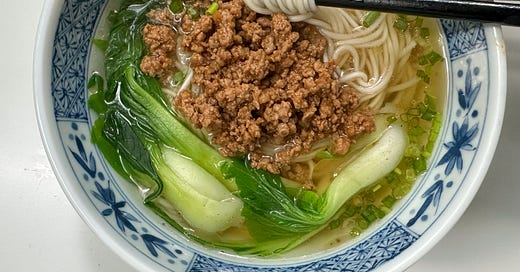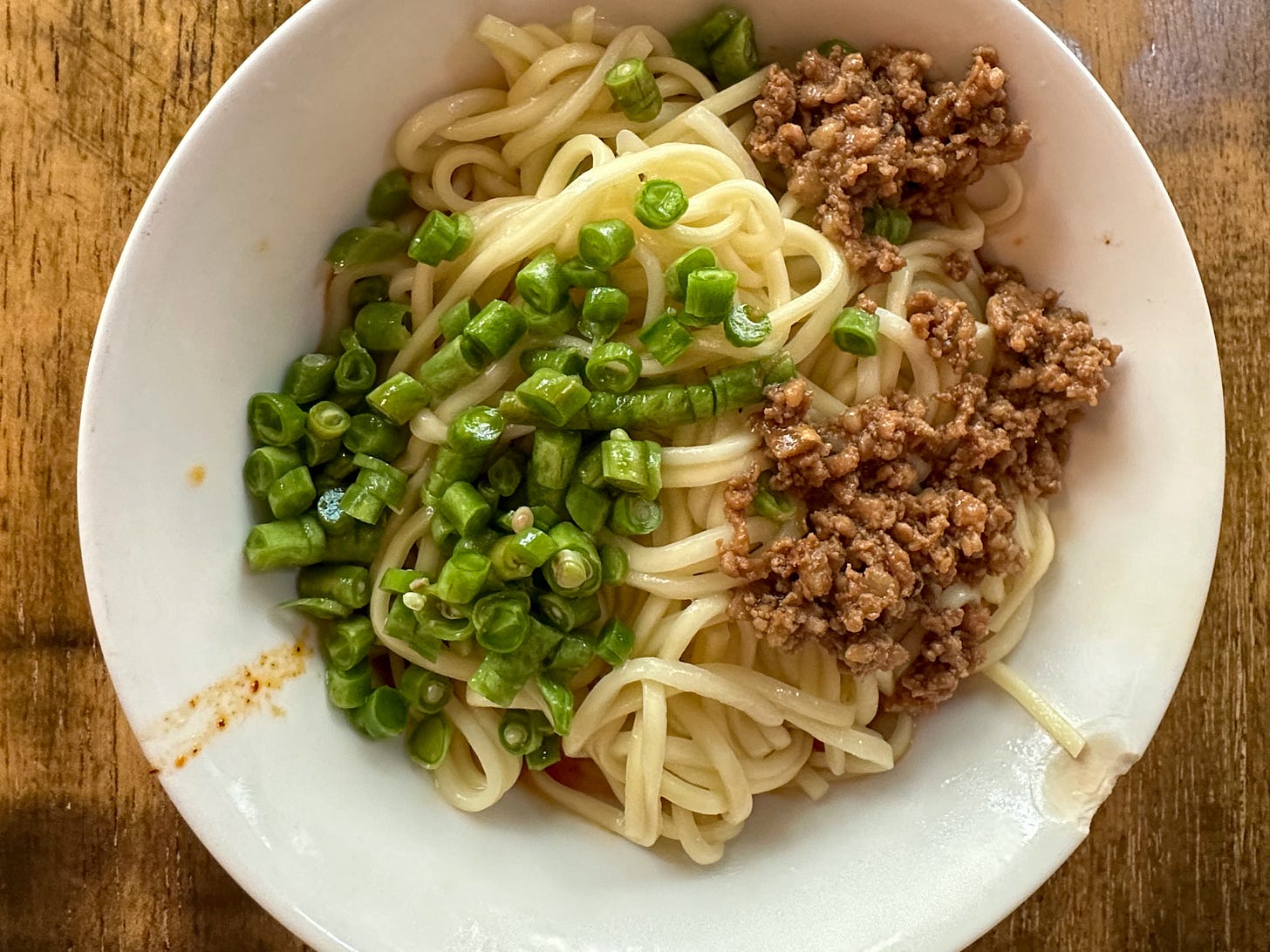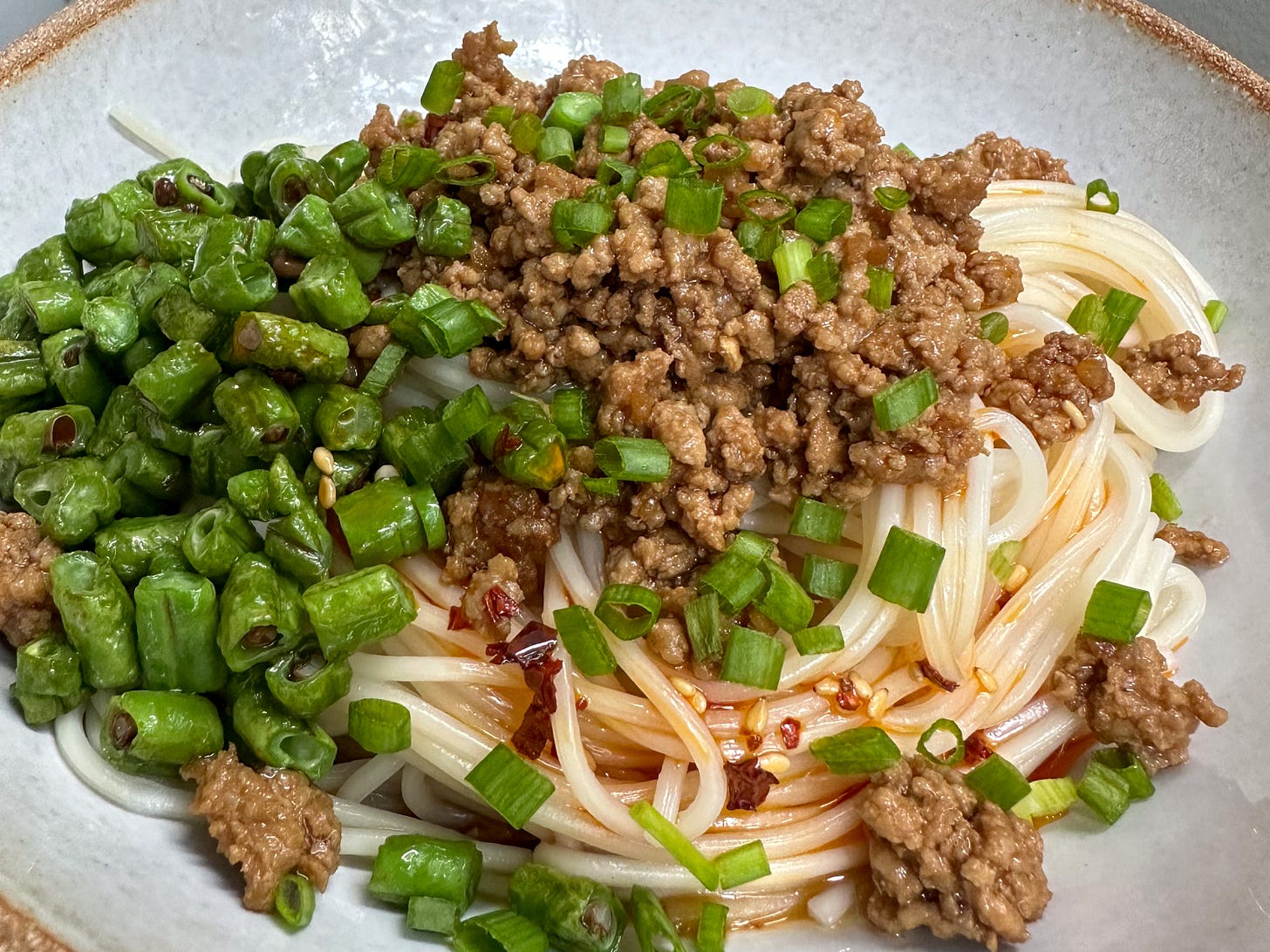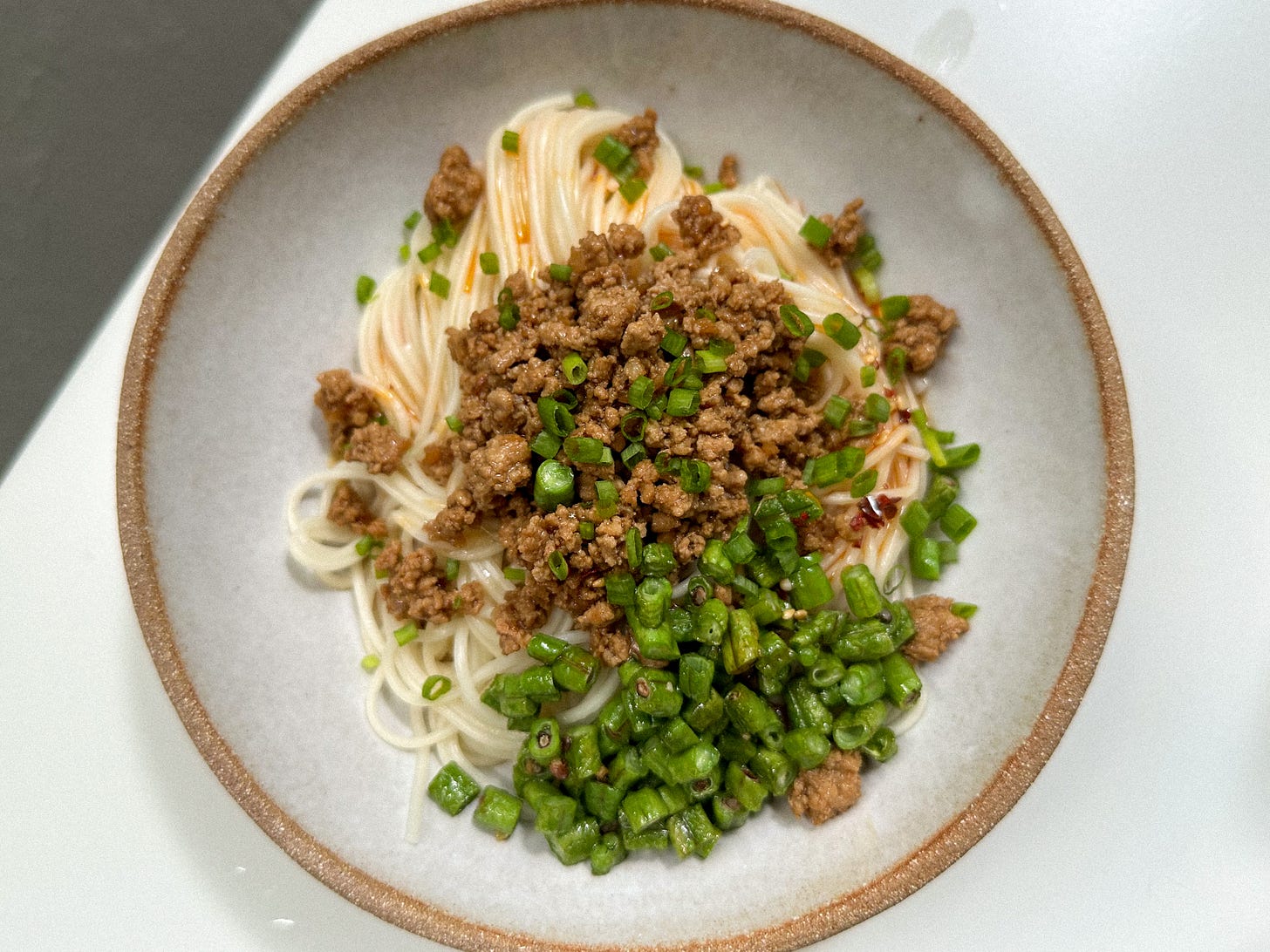Hi! This week we’re continuing the noodle streak with another Sichuan classic: za jiang mian (杂酱面).
Sichuan isn't known as a noodle-eating region, yet you'll find noodle eateries on every corner if you visit. They’re serving noodles, dumplings, and wontons for a quick breakfast and dinner, or late-night remedies for hungry young people.
Before returning to Germany this April, I visited a Michelin-listed (yet affordable) noodle eatery in Chengdu and indulged in my favorites: wontons in red oil, dan dan noodles, and dry spicy meat sauce noodles. The last, called su jiao za jiang mian (素椒杂酱面) was labeled as the “old Chengdu food” on the menu. According to the lady who placed the order, this was more popular among the locals while dan dan noodles are for tourists. Both dishes are nevertheless quite similar: thin noodles topped with minced meat and served with a spicy sesame sauce.
She wasn’t so wrong, Sichuan za jiang mian made its first recorded appearance alongside sweet-water noodles in the early 1900s. This predates dan dan noodles, which, according to food researcher Lan Yong, initially referred to all street-sold noodles on a pole. It only became more specific to today's version in the mid-20th century. In short, they likely share the same roots. Growing up in Sichuan, za jiang mian seems to be more prevalent and versatile for both home and restaurant alike, which can be served dry or with a broth (qing tang za jiang mian, 清汤杂酱面).
I love both versions (each suits different mood and weather), that’s why I want to make the topping and serve it two ways.
Watch me make it here!
How to make the minced meat sauce
The name za jiang translates to “mixed sauce” and is believed to be inspired by Beijing's “zha jiang” noodles (炸酱, fried sauce). Some suggest that the name is shifted due to a typo, or because the sauce is adapted with chili oil and sesame paste. Topping noodles with a fried meat sauce has inspired variations, including Korean Chinese jjajangmyeon and Japanese tan tan ramen.
Every family has its own recipe; for example, my grandma uses doubanjiang. I want to stick to the Chengdu version using sweet flour sauce after going through recipes from Fuchsia Dunlop and this one from Sichuan chefs.
this makes 4 servings of the noodle topping
200g minced pork
1 tbsp minced ginger
1/2 tsp white pepper
1 tbsp Shaoxing wine
1 tbsp sweet flour sauce (tian mian jiang)
1 tsp dark soy sauce
150ml stock or water
vegetable oil
1. Heat the oil in a wok over medium heat until warm, then add minced pork, breaking it apart with your spatula, and fry until it turns pale. Add Shaoxing wine and white pepper, and cook for 2 minutes until the liquid evaporates.
2. Add minced ginger and sweet flour sauce, and fry until the fat renders. Add stock and let it simmer for about 20 minutes until the liquid reduces.
3. Remove from heat and allow it to cool to room temperature. You can freeze any leftover sauce for future use, like in mapo tofu.
Notes on preparation
Sweet flour sauce: tian mian jian 甜面酱, is traditionally made with fermented flour and is most famous for being the dipping sauce for Peking duck. You can find it in Asian grocery stores (some under the name sweet bean sauce).
To make it at home: combine 100g water, 2 tbsp flour, 1 tbsp light soy sauce, 2 tbsp dark soy sauce, and 1.5 tbsp sugar in a pan. Simmer it over low heat while whisking until it becomes a dark paste.
A major difference between za jiang and dan dan noodles is that the meat is fried and then braised, resulting in a crisp, tender, and moist texture, whereas Dan Dan noodles have a drier and crispier topping. Some recipes even steam the fried meat mince to keep it moist.
Za Jiang Mian, two ways
For each bowl:
thin wheat noodles (dry: 60g, fresh: 100g)
3 tbsp minced meat sauce
dry, spicy version (su jiao za jiang mian)
1 tsp light soy sauce
1/2 tsp sugar
1 clove garlic, grated
1 tsp sesame paste
1 tsp sesame oil
1 tbsp chili oil with sediments
1 tsp lard (optional)
fried long bean topping (optional)
scallion for garnish
1. Combine all the seasonings in a bowl and mix thoroughly.
2. Sauté chopped long beans with salt and oil for about 3-5 minutes.
3. Cook noodles in boiling water according to package instructions, then drain, and add them to the serving bowl. Top with fried beans and minced meat. Mix thoroughly before eating.
broth version (qing tang za jiang mian):
The broth version excludes chili oil and sesame paste and is served with leafy vegetables like pea shoots or bok choy.
400ml stock (vegetable or chicken)
1 tbsp light soy sauce
1 tsp lard (optional)
1/4 tsp Sichuan pepper
1 tsp sesame oil
1/4 tsp salt
1 bok choy
scallion for garnish
1. Combine all the seasonings in a bowl and mix well.
2. In a separate saucepan, warm the stock over low heat.
3. Cook noodles in boiling water according to package instructions. Add bok choy and cook for 1 minute. Then drain and add everything to the serving bowl and top with minced meat.









Hiii!!! I made this for dinner tonight and it is AMAZING!! I’m literally eating it as I type this, it’s so good! Thank you so much for the recipe 🥹❤️